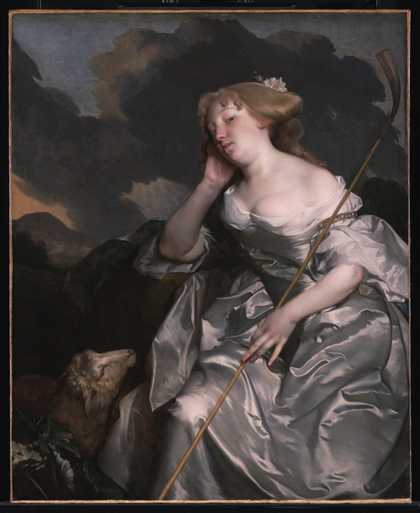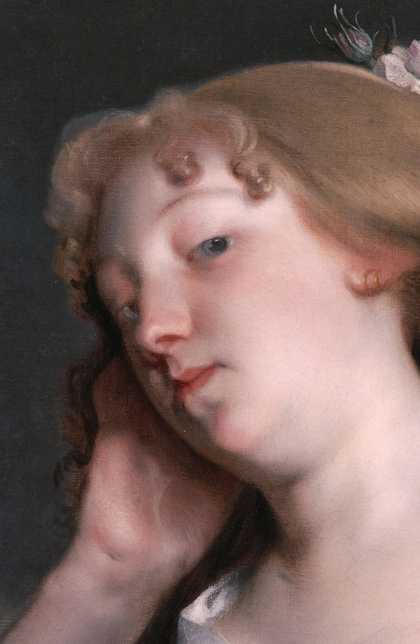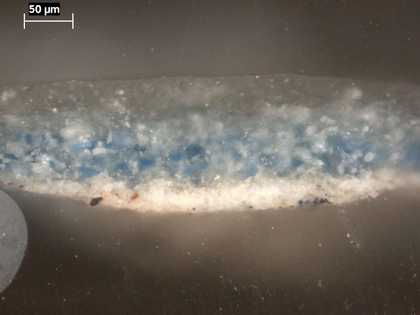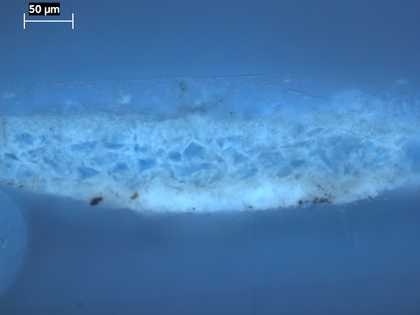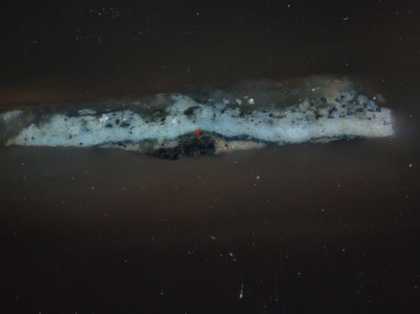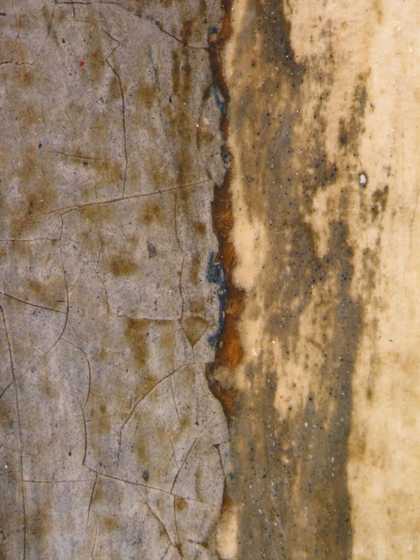This painting is in oil paint on canvas measuring 1244 x 1009 mm (figs.1–4). The single piece of linen canvas is plain woven and has a thread count of 12 vertical x 10 horizontal picks per square centimetre. Cusping is present on all four sides of the painting (fig.5).1 The original tacking margins have been trimmed off, apart from a narrow strip of the margin along the bottom edge. The glue-paste lining and adjustable pine stretcher probably date from the late nineteenth century.
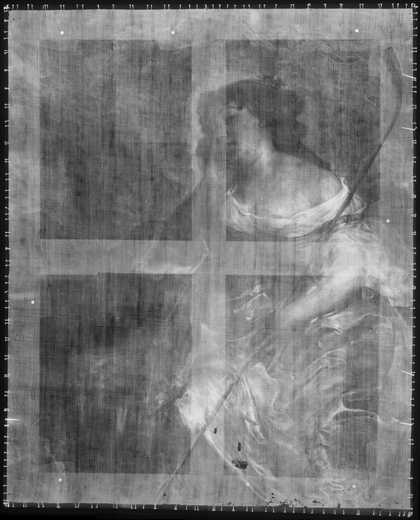
Fig.5
X-radiograph of Portrait of a Lady as a Shepherdess c.1670
The ground is opaque pink colour. It is composed of lead white, black, cologne earth, red and yellow earth colours, chalk, and glassy particles all bound together in oil (figs.6–7).2 There is no priming.
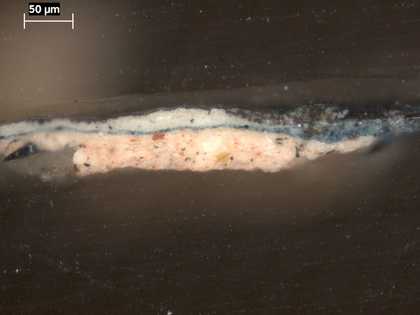
Fig.6
Cross-section through an unfaded area of the blue sash, photographed at x320 magnification. From the bottom: pink ground; opaque, mid-blue paint of varying thickness; opaque white paint; grey paint on right of sample

Fig.7
Cross-section through an unfaded area of the blue sash, photographed at x320 magnification in ultraviolet light. From the bottom: pink ground; opaque, mid-blue paint of varying thickness; opaque white paint; grey paint on right of sample
Close examination of the painting in conjunction with the infrared reflectograph (figs.2–4, 8) indicates that the composition was drawn out with brushes and brown paint, which varies in tone from russet to dark brown. These brownish tones remain visible as the dark shadows in the flesh tones, for example in the sitter’s right hand (fig.2) and in the hair. Here and there, for example in the fingers (fig.4), this brushed drawing was emphasised with very dark brown paint at a late stage of the painting to create deep shadows. The X-radiograph indicates that the eyebrows and the deeply shadowed side of the face were formed by thinly glazing over the brown paint.
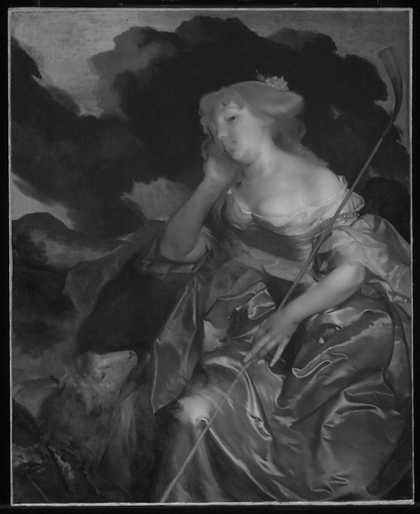
Fig.8
Infrared reflectogram of Portrait of a Lady as a Shepherdess c.1670
Cross-sections show that the composition was underpainted extensively and in a complex manner: the sky in white and grey, parts of the costume in indigo blue and greys (figs.9–13). The painting that we can see in normal viewing conditions was done with thick, well bound colours worked wet-in-wet with Soest’s characteristic sweeping brushstrokes and soft boundaries. When this work was dry, the deepest shadows of the costume were glazed with indigo blue, which occurs also in the areas of the costume that are now grey.
It is likely that the sash was deep blue originally and the costume a lighter, silvery blue. There is evidence that the indigo has faded except where protected from light (figs.3, 14–15). The blue areas of the sky contain smalt and possibly also ultramarine, mixed with lead white and black. Greens in the foliage in the foreground contain lead white, black, azurite, yellow and red earth colours, cologne earth and glassy particles. Yellow decoration on the sleeve is lead tin yellow (fig.16).
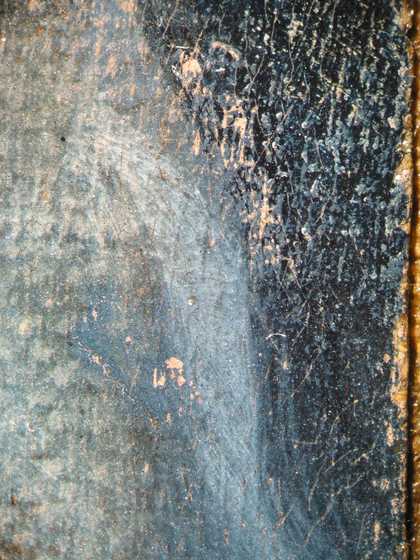
Fig.14
Detail of the costume at the right edge with unfaded indigo blue

Fig.15
Detail at x8 magnification of the sash, showing a line of the original, unfaded indigo blue
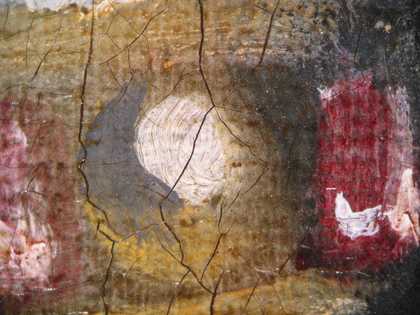
Fig.16
Detail at x8 magnification of the jewelled bracelet
February 2005

